Published 05 Jul 2024
The role of plurilingual education in culturally responsive teaching – Strathcona Girls Grammar
Engaged with colleagues, school and the broader community
Hannah Peace – Head of House, International Student Co-ordinator and VCE EAL teacher
Strathcona Girls Grammar
Schools and early childhood services across Victoria continue to provide quality learning experiences across all levels. The VIT’s Professional Practice team is privileged to see this work first-hand on visits to workplaces around the state. This is just one example showcasing the great work happening in a Victorian school.
In an increasingly diverse world, plurilingual learners are more common than ever. Defined as the ability to use knowledge of different languages to communicate and learn, “plurilingual awareness” is often seen in English as an Additional Language (EAL) students and those who use Auslan, who are adding English to the languages they regularly speak and use.
At Strathcona Girls Grammar, they’re making it their mission to overhaul their teaching and learning to not only factor in the cultural differences that can shape a plurilingual learner’s education outcomes, but celebrate them.
We spoke to Hannah Peace about Strathcona’s plans to change their approach, and the impact they hope to have on plurilingual learners in their school community.
Q: Can you provide some background to your approach in developing the initiative, including any research or established models / strategies that your approach is based upon?
Over the last few years, there has been a significant shift in the way we approach the teaching of plurilingual learners. This has now been recently reflected in new updates to the Victorian Curriculum F-10 EAL, with a strand now specifically focusing on Cultural and Plurilingual Awareness.
The Cultural and Plurilingual Awareness strand builds on a wide body of research into second and additional language acquisition. This research shows that it is important to move away from the ‘deficit’ view of EAL students as ‘non-English speaking’. Instead, teachers should embrace a positive view of EAL students as speakers of multiple languages. This can improve learning outcomes and help students feel valued.

Plurilingual classroom activities
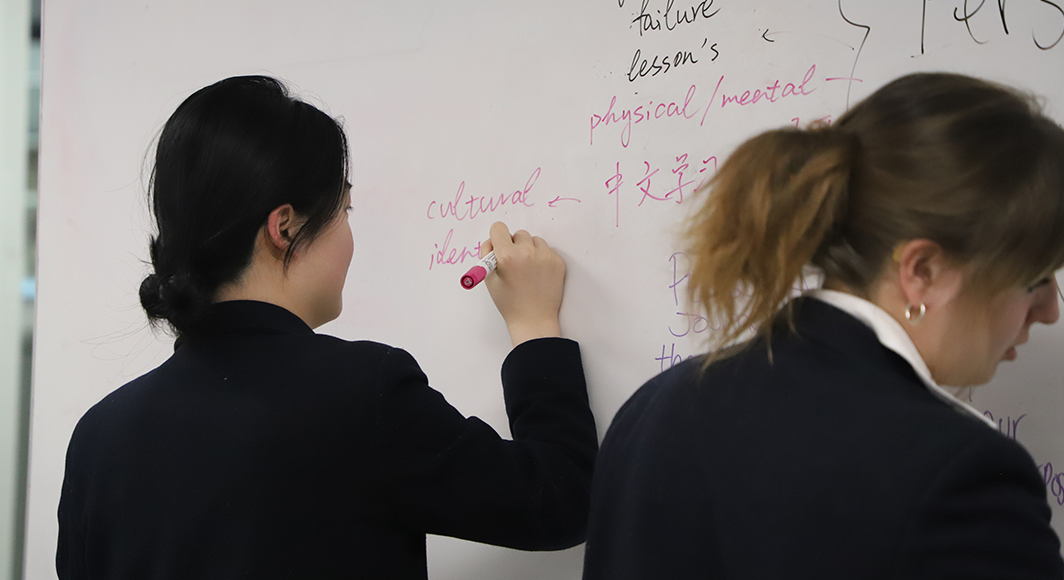
Plurilingual classroom activities
I recently had a poignant conversation with Dr Linda Hui Yang, the Managing Director at the Intercultural Development Institute and Senior Lecturer and PhD researcher at Murdoch University. I spoke to Dr Yang at the Australian International Education Conference about culturally inclusive teaching, and how to develop intercultural competence in practice, particularly through the use of a pluralistic approach. Dr Yang spoke at length about the need for teaching and learning to encompass the four quadrants of cultural divide – attitude, knowledge, strategies, and action.
The overlapping of these quadrants highlights that understanding of culture is key for both learner and teacher, and it is important to acknowledge that this goes in both directions. Strategies and actions must always be underpinned by cultural knowledge and understanding. For example, a student may come to the classroom and not respond to questions, and we view it as passive engagement, however, the student may see this as a sign of respect based on their own cultural upbringing and values.
To create a culturally inclusive teaching environment, we need to adopt a plurilingual linguistic approach that places students in the centre of the learning process. There is value in taking a student’s prior learning and making it accessible and providing learners with tools to communicate this effectively to us as educators. In the past, EAL programs have focused on proficiency of English language without explicitly acknowledging the value of prior learning that has occurred in the student’s native language. When students can draw on what they already know in their native languages, not only can they make connections to new concepts more easily, but they are also more likely to grasp complex concepts when they can relate new information to their existing knowledge base. While this seems to be a very simple concept, the idea of positive language transfer has often been under-utilised and sometimes even under-valued.
To bridge the cultural divide, we are dedicated to cultivating strong relationships with our plurilingual learners and their families. We are focused on the implementation of research-based, tangible plurilingual teaching and learning practices that empower plurilingual speakers. Teachers in the EAL domain often report feeling siloed and can be looked to for advice and guidance, without the opportunity to network and learn from educational research. We hope to further improve this by engaging in professional development that fosters a sense of collaboration and support for all teachers at our school, not just those teaching EAL.
Some early strategies of our approach include establishing plurilingual vocabulary banks and glossaries of key terms. This empowers learners to actively use diverse languages to build their understanding and strengthens our teachers’ knowledge too.
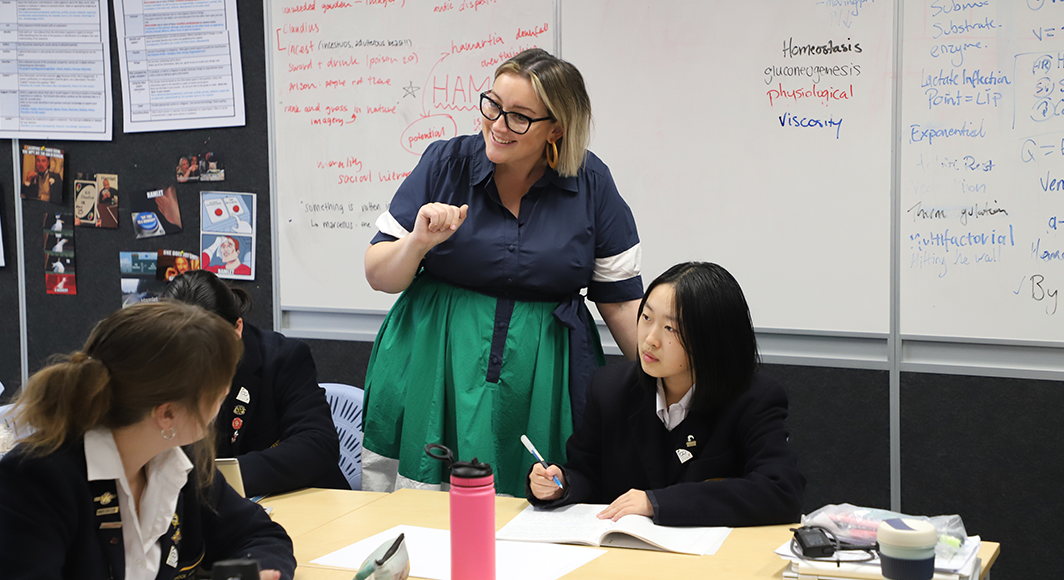
Hannah Peace with learners
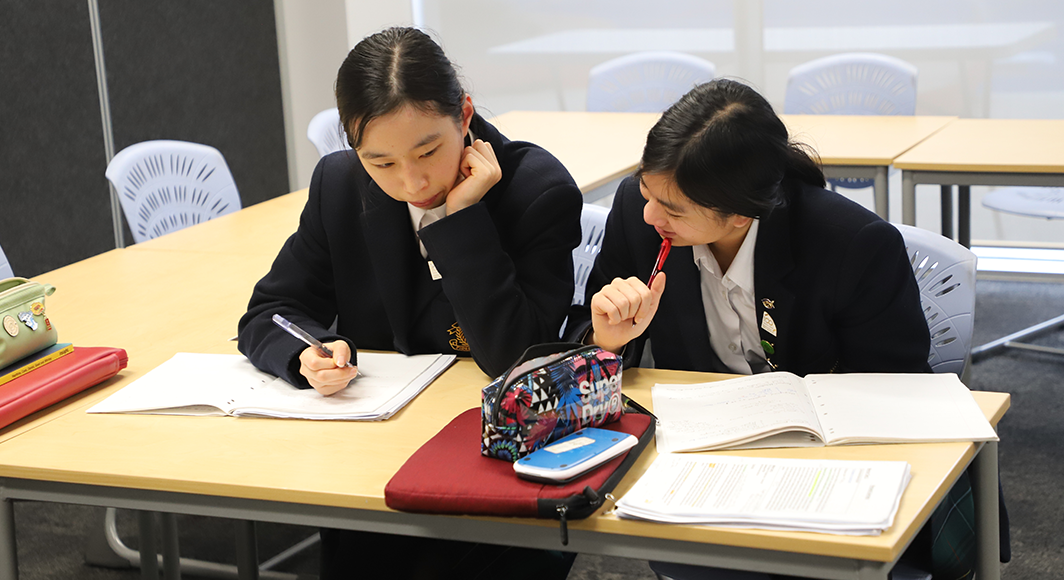
Learners at Strathcona Girls Grammar
Q: What structural things are in place to ensure that the initiative has its best chance of success?
This year, Strathcona Girls Grammar has partnered with International Diagnostic and Admission Testing (IDAT) to help us build a full profile of each plurilingual student’s English and Mathematics proficiencies as well as their reasoning, logic, and critical thinking skills. It is important that we form a holistic and data informed understanding of each student. Learner profiles ensure that we can capture this information in an accessible strategy focused document that teachers can refer to.
Additionally, professional learning offered as part of our whole school staff professional learning calendar will be delivered in line with these strategies. As a school, we are currently developing a resource bank to support our teachers to develop their culturally inclusive teaching practice.
The orientation and induction process of plurilingual students also forms a crucial part of our approach as this is where we can emphasise the value we place on native language and cultural inclusion in our community. For many families, they choose an English-speaking school for the additional language exposure for their child. In this instance, we play a role in educating the learner’s families, in much the same way as we have with our educators.
The structural measures being implemented at Strathcona to support plurilingual learning are crucial in laying the foundation for an inclusive and dynamic educational environment. It is important to acknowledge that these initial steps are just the beginning. We are committed to continuously fostering the growth of this program, enhancing it further to ensure all students benefit from a rich, culturally diverse, and linguistically supportive learning experience.
Our goal is to create an evolving, responsive, and thriving plurilingual community within our school.
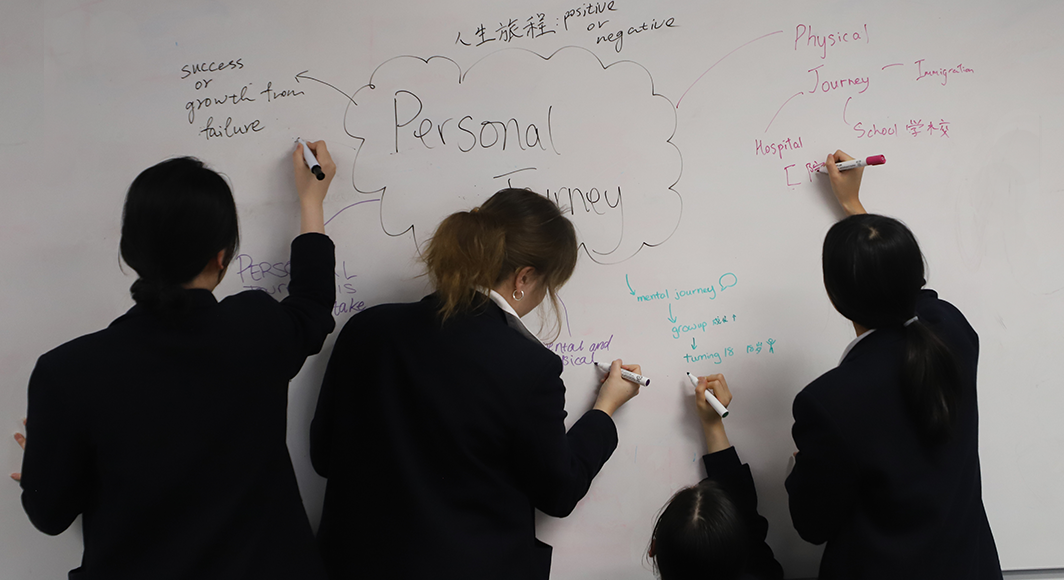
Plurilingual classroom activities
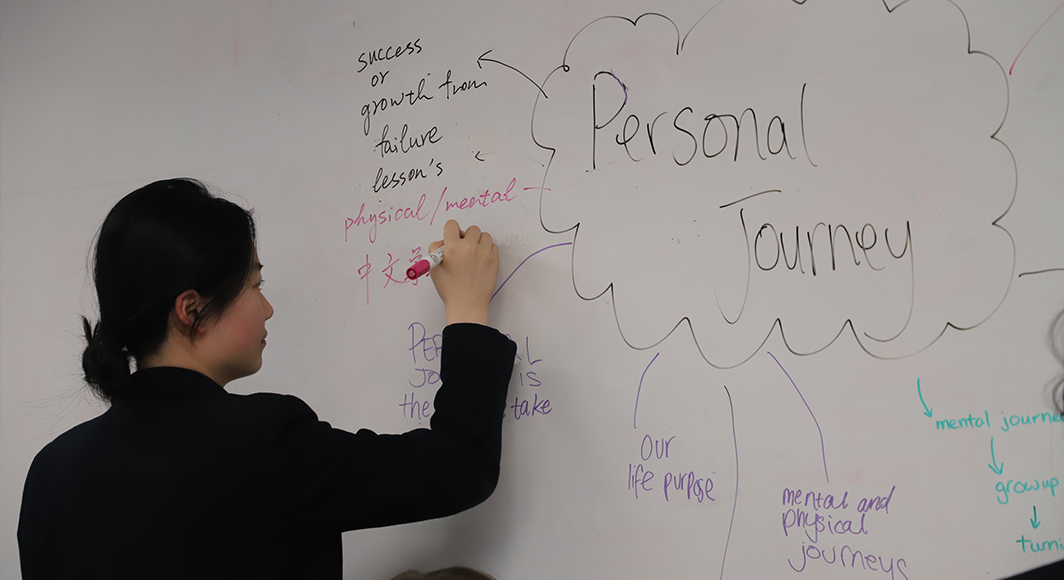
Plurilingual classroom activities
Q: What are the greatest benefits to staff development of this approach?
Enhancing our staff’s cultural competence and strengthening their ability to support plurilingual learners is the outcome that we are focused on.
First and foremost, an increased level of cultural competence benefits staff as they can acknowledge linguistic diversity, and in the longer-term, teachers are able to build a toolkit of approaches to overcome the cultural divide. In a language that is not their own, EAL students often grapple with understanding new concepts, adapting to new ways of learning and behaving, and navigating unfamiliar systems and protocols.
Through increased cultural responsiveness, understanding and empathy, we are fostering stronger relationships between teacher and students.
Q: What have been the benefits to learner outcomes of this approach?
We are hopeful that our program will deliver the following benefit for learners
Improved language proficiency
By integrating students' home languages into instruction, a plurilingual approach provides additional scaffolding for language acquisition. For example, EAL learners who are encouraged to use their first language(s) alongside English often demonstrate faster progress in vocabulary acquisition and overall language proficiency. Broad research has shown that maintaining and developing literacy skills in a student's first language can positively impact their English language development as well.
Increased engagement and motivation
When students see their languages and cultures reflected in the curriculum, they feel a greater sense of connection to the material and are more motivated to participate actively in learning activities. For instance, incorporating culturally relevant texts and resources in multiple languages can pique students' interest and curiosity, leading to deeper engagement and better retention of content.
Enhanced cognitive skills
Plurilingualism has been linked to cognitive benefits such as improved problem-solving abilities, cognitive flexibility, and cultural awareness. For example, EAL learners who regularly engage in code-switching or exercises that empower learners to move fluidly between languages develop stronger metacognitive skills as they use a broad knowledge base to express their thoughts and ideas. This cognitive flexibility not only supports language learning but also transfers to other academic areas.
A broader cultural understanding and appreciation, fostering a more inclusive and respectful classroom community
By learning about their classmates' languages and cultures, domestic students develop a greater appreciation for diversity and multiculturalism. For instance, collaborative projects that require students to share stories, traditions, or folktales from their cultural backgrounds promote empathy, cultural sensitivity, and intercultural communication skills. This understanding fosters a more inclusive and respectful classroom community where students value each other's differences.
Q: What plans does your workplace have to take this approach forward?
We are committed to building cultural competency across all facets of our school community.
A key part of our strategy hinges on enhancing our staff professional learning offerings through intentional workshops held for educators from early learning to year 12, which will be facilitated by our newly appointed EAL Co-ordinator, Christine Luo.
Past and future workshops have and will continue to cover topics such as translanguaging pedagogies, multicultural curriculum design in alignment to the new EAL Curriculum Framework, and strategies for integrating students' linguistic and cultural backgrounds into instruction. It’s really important to us that we have a well-informed, well-trained team of EAL teachers who can collaborate and develop an approach to supporting EAL learners school-wide.
We will continue to provide access and support to language support services, with our fulltime Cultural Diversity Officer, Jerry Wu, who commenced at Strathcona this year. Our Cultural Diversity Officer plays a pivotal role in promoting an inclusive and supportive learning environment within the school community by working closely with teachers and students from Foundation to Year 12. Our Cultural Diversity Officer also serves as a bridge between various cultural groups, facilitating communication, collaboration, and mutual respect to enhance the educational experience for all members of the school community. While our plurilingual approach is central to our teaching and learning approach in the EAL domain, our vision is to empower students and staff to feel comfortable utilising plurilingual strategies in mainstream classes.
With the introduction of IDAT as a key starting point, we will continue to move forward with our data collection and evaluation. Through the analysis of student growth and school connection, we will assess student outcomes, language proficiency and cultural responsiveness to monitor the effectiveness of culturally inclusive approaches such as plurilingual initiatives. Providing student voice and agency within this process is absolutely pivotal as a form of data collection. Making space to open conversations with our students and how they feel they are developing academically and socially is crucial in navigating and informing this approach.
Q: Can you detail any references or citations applicable?
- Plurilingual awareness (education.vic.gov.au) – Department of Education Victoria
- International Diagnostic and Admissions Test - IDAT
- The Bell Foundation – The Bell Foundation
- Plurilingualism and language and literacy education – The Australian Journal of Language and Literacy
- Achieving Culturally Inclusive Teaching: Utilizing Universal Design for Learning Framework – Linda Hui Yang
- Teaching for Transfer in Multilingual School Contexts – Jim Cummins.
Do you have an example of outstanding work in your school or early childhood service? We’d like to consider showcasing it the Excellence in Teaching section of our website. Send your example and contact details to vitcomms@vit.vic.edu.au.
